Neocuproine
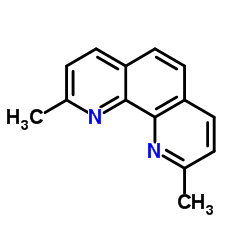
Neocuproine structure
|
Common Name | Neocuproine | ||
|---|---|---|---|---|
| CAS Number | 484-11-7 | Molecular Weight | 208.258 | |
| Density | 1.2±0.1 g/cm3 | Boiling Point | 367.4±37.0 °C at 760 mmHg | |
| Molecular Formula | C14H12N2 | Melting Point | 159-164 °C | |
| MSDS | USA | Flash Point | 159.7±17.8 °C | |
| Symbol |

GHS07 |
Signal Word | Warning | |
Use of NeocuproineNeocuproine is a biochemical reagent that can be used as a biological material or organic compound for life science related research. |
| Name | 2,9-Dimethyl-1,10-Phenanthroline |
|---|---|
| Synonym | More Synonyms |
| Description | Neocuproine is a biochemical reagent that can be used as a biological material or organic compound for life science related research. |
|---|---|
| Related Catalog |
| Density | 1.2±0.1 g/cm3 |
|---|---|
| Boiling Point | 367.4±37.0 °C at 760 mmHg |
| Melting Point | 159-164 °C |
| Molecular Formula | C14H12N2 |
| Molecular Weight | 208.258 |
| Flash Point | 159.7±17.8 °C |
| Exact Mass | 208.100052 |
| PSA | 25.78000 |
| LogP | 2.70 |
| Vapour Pressure | 0.0±0.8 mmHg at 25°C |
| Index of Refraction | 1.693 |
| InChIKey | IYRGXJIJGHOCFS-UHFFFAOYSA-N |
| SMILES | Cc1ccc2ccc3ccc(C)nc3c2n1 |
| Water Solubility | slightly soluble |
Synonym:Neocuproine hemihydrat Section 2 - COMPOSITION, INFORMATION ON INGREDIENTS
Risk Phrases: None Listed. Section 3 - HAZARDS IDENTIFICATION EMERGENCY OVERVIEW
Light sensitive.The toxicological properties of this material have not been fully investigated. Potential Health Effects Eye: Causes eye irritation. Skin: Causes skin irritation. Ingestion: May cause gastrointestinal irritation with nausea, vomiting and diarrhea. The toxicological properties of this substance have not been fully investigated. Inhalation: Causes respiratory tract irritation. The toxicological properties of this substance have not been fully investigated. Chronic: No information found. Section 4 - FIRST AID MEASURES Eyes: Immediately flush eyes with plenty of water for at least 15 minutes, occasionally lifting the upper and lower eyelids. Get medical aid. Skin: Immediately flush skin with plenty of water for at least 15 minutes while removing contaminated clothing and shoes. Get medical aid if irritation develops or persists. Ingestion: If victim is conscious and alert, give 2-4 cupfuls of milk or water. Never give anything by mouth to an unconscious person. Get medical aid. Inhalation: Remove from exposure and move to fresh air immediately. If not breathing, give artificial respiration. If breathing is difficult, give oxygen. Get medical aid. Notes to Physician: Section 5 - FIRE FIGHTING MEASURES General Information: As in any fire, wear a self-contained breathing apparatus in pressure-demand, MSHA/NIOSH (approved or equivalent), and full protective gear. During a fire, irritating and highly toxic gases may be generated by thermal decomposition or combustion. Extinguishing Media: Use water spray, dry chemical, carbon dioxide, or chemical foam. Section 6 - ACCIDENTAL RELEASE MEASURES General Information: Use proper personal protective equipment as indicated in Section 8. Spills/Leaks: Vacuum or sweep up material and place into a suitable disposal container. Reduce airborne dust and prevent scattering by moistening with water. Clean up spills immediately, observing precautions in the Protective Equipment section. Section 7 - HANDLING and STORAGE Handling: Wash thoroughly after handling. Wash hands before eating. Use with adequate ventilation. Avoid contact with skin and eyes. Avoid ingestion and inhalation. Store protected from light. Storage: Store in a cool, dry place. Do not store in direct sunlight. Store in a tightly closed container. Section 8 - EXPOSURE CONTROLS, PERSONAL PROTECTION Engineering Controls: Use adequate ventilation to keep airborne concentrations low. Exposure Limits CAS# 484-11-7: Personal Protective Equipment Eyes: Wear appropriate protective eyeglasses or chemical safety goggles as described by OSHA's eye and face protection regulations in 29 CFR 1910.133 or European Standard EN166. Skin: Wear appropriate gloves to prevent skin exposure. Clothing: Wear appropriate protective clothing to prevent skin exposure. Respirators: Follow the OSHA respirator regulations found in 29 CFR 1910.134 or European Standard EN 149. Use a NIOSH/MSHA or European Standard EN 149 approved respirator if exposure limits are exceeded or if irritation or other symptoms are experienced. Section 9 - PHYSICAL AND CHEMICAL PROPERTIES Physical State: Solid Color: off-white Odor: Not available. pH: Not available. Vapor Pressure: Not available. Viscosity: Not available. Boiling Point: Not available. Freezing/Melting Point: 160 deg C Autoignition Temperature: Not available. Flash Point: Not available. Explosion Limits, lower: Not available. Explosion Limits, upper: Not available. Decomposition Temperature: Not available. Solubility in water: Soluble in water. Specific Gravity/Density: Not available. Molecular Formula: C14H12N2.0.5H2O Molecular Weight: 225.1038 Section 10 - STABILITY AND REACTIVITY Chemical Stability: Stable under normal temperatures and pressures. Conditions to Avoid: Incompatible materials, light. Incompatibilities with Other Materials: Strong oxidizing agents. Hazardous Decomposition Products: Nitrogen oxides, carbon monoxide, irritating and toxic fumes and gases, carbon dioxide. Hazardous Polymerization: Has not been reported. Section 11 - TOXICOLOGICAL INFORMATION RTECS#: CAS# 484-11-7 unlisted. LD50/LC50: Not available. Carcinogenicity: 2,9-Dimethyl-1,10-phenanthroline - Not listed by ACGIH, IARC, or NTP. Section 12 - ECOLOGICAL INFORMATION Section 13 - DISPOSAL CONSIDERATIONS Products which are considered hazardous for supply are classified as Special Waste and the disposal of such chemicals is covered by regulations which may vary according to location. Contact a specialist disposal company or the local waste regulator for advice. Empty containers must be decontaminated before returning for recycling. Section 14 - TRANSPORT INFORMATION IATA Not regulated as a hazardous material. IMO Not regulated as a hazardous material. RID/ADR Not regulated as a hazardous material. Section 15 - REGULATORY INFORMATION European/International Regulations European Labeling in Accordance with EC Directives Hazard Symbols: Not available. Risk Phrases: Safety Phrases: WGK (Water Danger/Protection) CAS# 484-11-7: 1 Canada CAS# 484-11-7 is listed on Canada's DSL List. CAS# 484-11-7 is not listed on Canada's Ingredient Disclosure List. US FEDERAL TSCA CAS# 484-11-7 is listed on the TSCA inventory. SECTION 16 - ADDITIONAL INFORMATION N/A |
| Symbol |

GHS07 |
|---|---|
| Signal Word | Warning |
| Hazard Statements | H315-H319-H335 |
| Precautionary Statements | P261-P305 + P351 + P338 |
| Personal Protective Equipment | dust mask type N95 (US);Eyeshields;Gloves |
| Hazard Codes | Xn:Harmful; |
| Risk Phrases | R20/21/22;R36/37/38 |
| Safety Phrases | S26-S36/37/39 |
| RIDADR | NONH for all modes of transport |
| WGK Germany | 3 |
| HS Code | 29339990 |
|
~41% 
Neocuproine CAS#:484-11-7 |
| Literature: De, Kavita; Legros, Julien; Crousse, Benoit; Chandrasekaran, Srinivasan; Bonnet-Delpon, Daniele Organic and Biomolecular Chemistry, 2011 , vol. 9, # 2 p. 347 - 350 |
|
~59% 
Neocuproine CAS#:484-11-7 |
| Literature: Chelucci, Giorgio; Addis, Daniele; Baldino, Salvatore Tetrahedron Letters, 2007 , vol. 48, # 19 p. 3359 - 3362 |
|
~% 
Neocuproine CAS#:484-11-7 |
| Literature: Case Journal of the American Chemical Society, 1948 , vol. 70, p. 3994 |
|
~% 
Neocuproine CAS#:484-11-7 |
| Literature: Pijper; Van der Goot; Timmerman; Nauta Th. European Journal of Medicinal Chemistry, 1984 , vol. 19, # 5 p. 399 - 404 |
|
~% 
Neocuproine CAS#:484-11-7 |
| Literature: Arnaud-Neu, Francoise; Marques, Elizabete; Schwing-Weill, Marie-Jose; Dietrich-Buchecker, Christiane; Sauvage, Jean-Pierre; Weiss, Jean New Journal of Chemistry, 1988 , vol. 12, p. 15 - 20 |
| Precursor 7 | |
|---|---|
| DownStream 10 | |
| HS Code | 2933990090 |
|---|---|
| Summary | 2933990090. heterocyclic compounds with nitrogen hetero-atom(s) only. VAT:17.0%. Tax rebate rate:13.0%. . MFN tariff:6.5%. General tariff:20.0% |
|
Comparative in vitro study on magnetic iron oxide nanoparticles for MRI tracking of adipose tissue-derived progenitor cells.
PLoS ONE 9(9) , e108055, (2014) Magnetic resonance imaging (MRI) using measurement of the transverse relaxation time (R2*) is to be considered as a promising approach for cell tracking experiments to evaluate the fate of transplante... |
|
|
Chemical profile and biological activities of Veronica thymoides subsp. pseudocinerea.
Pharm. Biol. 53(3) , 334-9, (2015) In Turkey, Veronica species (Plantaginaceae) have been used as a diuretic and for wound healing in traditional medicine.To examine the fatty acid and essential oil profiles, the antioxidant, anticholi... |
|
|
Inhibitory effects of phenolic compounds from Artocarpus styracifolius on respiratory burst of rat neutrophils.
Pharm. Biol. 52(8) , 944-50, (2014) Searching for polymorphonuclear neutrophils (PMNs) respiratory burst inhibitors is an important topic in the treatment of human diseases associated with inflammation.To investigate the inhibitory effe... |
| 2,9-Dimethyl-1,10-phenanthroline Hemihydrate |
| 1,10-Phenanthroline, 2,9-dimethyl- |
| EINECS 207-601-9 |
| Neocuproine |
| 2,9-Dimethyl-1,10-phenanthroline |
| 2,9-Dimethyl-1, 10-Phenanthroline |
| MFCD00004973 |
| Neocuproine hemihydrate |
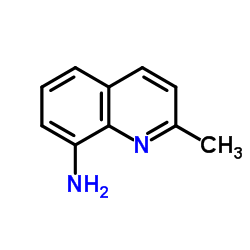
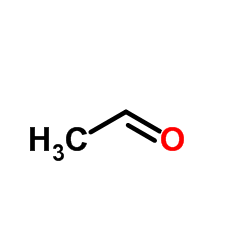
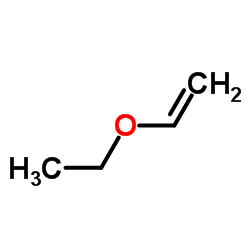
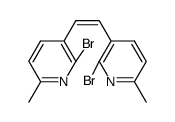
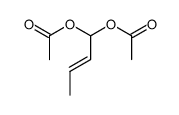
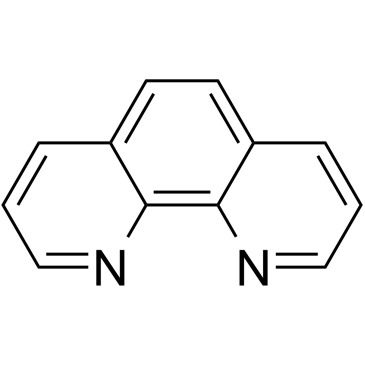

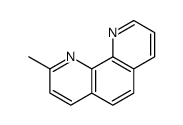
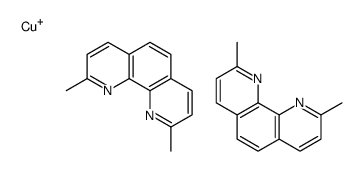

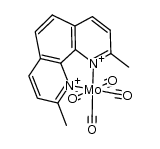 CAS#:23301-98-6
CAS#:23301-98-6 CAS#:121-46-0
CAS#:121-46-0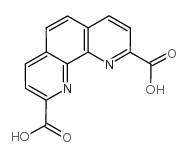 CAS#:57709-61-2
CAS#:57709-61-2 CAS#:102331-54-4
CAS#:102331-54-4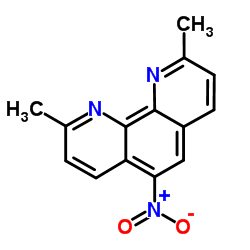 CAS#:118752-27-5
CAS#:118752-27-5 CAS#:133931-80-3
CAS#:133931-80-3![2-methyl-9-[2-(9-methyl-1,10-phenanthrolin-2-yl)ethyl]-1,10-phenanthroline structure](https://image.chemsrc.com/caspic/494/120096-06-2.png) CAS#:120096-06-2
CAS#:120096-06-2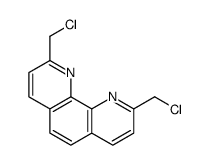 CAS#:87518-61-4
CAS#:87518-61-4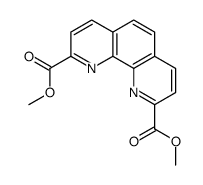 CAS#:78831-35-3
CAS#:78831-35-3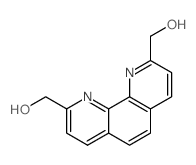 CAS#:78831-36-4
CAS#:78831-36-4
